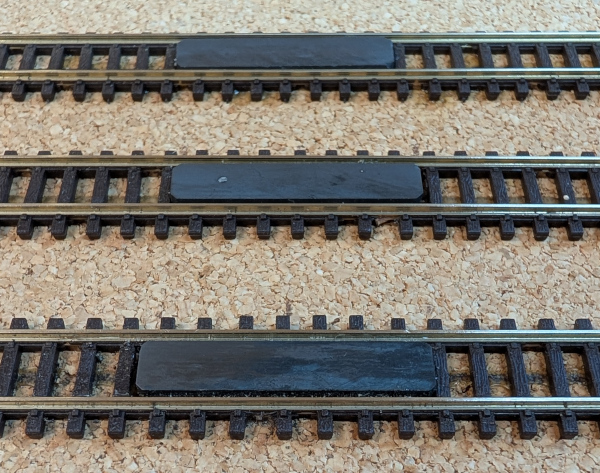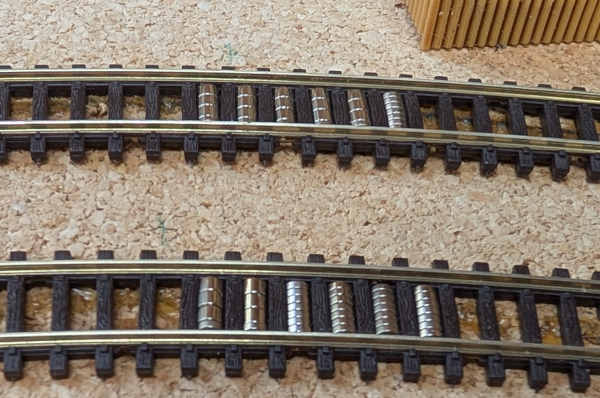The Dapol couplings (and the microtrains ones before them) use magnets for uncoupling. If the coupling has no tension as it crosses the magnet, the two halves of the coupling are pulled apart and separate. The idea is, if you drive a train normally across the magnet it won't uncouple but if you reverse when over it, it will. The couplings then stay uncoupled if you push the train backwards to a final resting position.
For this to work, it needs a magnet with its North-South poles across the crack. The Peco kind of coupling magnet is no use for these. I have permanent magnets located at the end of terminus tracks where uncoupling will take place.
The Microtrains magnets are rectangular, and you need to cut away the sleepers to use them. Cut a gap, add epoxy and insert the magnet; they provide a jig to hold it in place until the adhesive has set. The Dapol magnets are similar, but I think a little narrower. Great on a straight track, but a problem on a curve where cutting away the sleepers might affect track geometry.

I have found what seems to be a viable alternative. This uses small 3mm round magnets which fit between the sleepers. With a string of magnets equal to the track gap (ie it just fills the space available) it is powerful enough to operate the couplings. 5 or 6 such strings provides a magnet long enough that you don't have to hunt for it. These magnets are readily available and very powerful. Look for 3mm diameter Neodymium magnets which are available in 1mm, 2mm and 3mm lengths. A 7mm overall length is needed; that could be 7 1mm magnets or 3x2mm magnets with a 1mm magnet at the end. Aim to get all the "north" poles at the same end: you want the ends along one rail all to be trying to repel each other.

In the diagram you see uncoupling magnets on a bend; they seem to work fine. I plan to put a piece of plasticard over the top that appears to be wooden boarding as if it was a barrow crossing.
